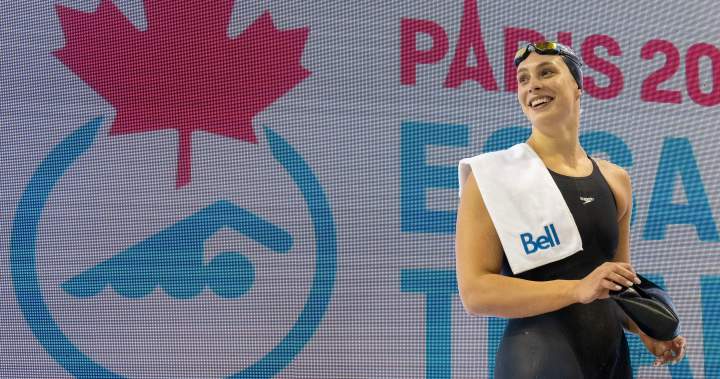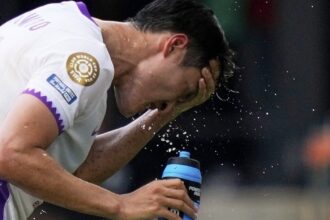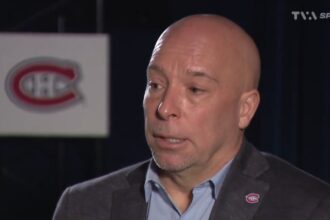The Olympic dream is built on sacrifice, determination, and the pursuit of excellence. When that dream collides with the harsh realities of anti-doping regulations, the reverberations extend far beyond individual athletes. This past week, Canadians were stunned to learn that swimming sensation Penny Oleksiak—our most decorated Olympian—has been hit with a one-year suspension after testing positive for a banned substance, sending shockwaves through Canada’s Olympic community just months before the Paris Games.
At 24, Oleksiak has been the golden face of Canadian swimming since her breakthrough performance at the 2016 Rio Olympics, where she captured four medals as a teenager. Her journey from prodigy to veteran competitor has been followed with national pride. Now, this unexpected chapter adds complexity to her storied career, raising questions about intent, accountability, and the rigidity of anti-doping frameworks.
According to the Canadian Centre for Ethics in Sport, Oleksiak tested positive for traces of clostebol, an anabolic steroid, which she maintains came from using a medicinal spray to treat a cut on her foot. The substance, prohibited under World Anti-Doping Agency rules, triggered an automatic suspension despite Oleksiak’s insistence that the exposure was accidental and provided no competitive advantage.
“I would never knowingly take a banned substance,” Oleksiak stated in her public response, a refrain familiar in the landscape of doping controversies. Yet her case highlights the often-blurred lines between deliberate cheating and inadvertent contamination in today’s hyper-regulated sporting environment.
What makes this case particularly significant is Oleksiak’s status within Canadian sports culture. As our most decorated Olympian with seven medals across two Games, she has transcended the relatively niche world of competitive swimming to become a national icon. Her absence from the Paris Olympics represents not just a competitive loss for Team Canada but a symbolic one as well.
The timing couldn’t be more challenging. With the Paris Olympics just months away, Swimming Canada must now recalibrate its medal expectations and relay strategies. Beyond the pool, the Canadian Olympic Committee faces the difficult task of managing public perception around one of its most marketable athletes.
This case underscores the precarious position elite athletes occupy in relation to anti-doping regulations. The standard of “strict liability” means that athletes bear complete responsibility for substances found in their bodies, regardless of how they got there. This approach, while designed to prevent elaborate doping excuses, creates a system where intent often takes a backseat to test results.
The sports medicine community has long highlighted the risks of cross-contamination and accidental exposure. Dr. Andrew Pipe, a leading Canadian sports medicine physician, has previously noted that “the sensitivity of modern testing methods means that even minute, performance-irrelevant quantities of prohibited substances can trigger positive tests.” This reality places athletes in a constant state of vigilance regarding medications, supplements, and even cosmetic products.
For Canadian fans who have followed Oleksiak’s career—from her teenage triumph in Rio to her resilient comeback at Tokyo—this suspension creates a complicated emotional landscape. Many express support while wrestling with disappointment, reflecting our collective struggle to reconcile human error with the idealistic expectations placed on Olympic heroes.
Within the CO24 Culture landscape, Oleksiak’s situation represents a pivotal moment in how we understand sports celebrities. Unlike previous generations of athletes who were primarily judged on performance alone, today’s sports figures exist in an environment where ethical considerations and personal responsibility are equally scrutinized components of their public image.
The response from the Canadian swimming community has been measured, acknowledging the rules while expressing support for Oleksiak’s character. This measured approach reflects a growing sophistication in how we process doping controversies, moving away from binary judgments toward a more nuanced understanding of the complexities involved.
As we process this development, it’s worth considering the broader implications for CO24 Trends in elite sports. The increasing sensitivity of testing technology, combined with athletes’ expanding commercial activities and personal brand development, creates unprecedented vulnerability. The line between personal care products and prohibited substances has never been thinner.
Looking ahead to Paris, Team Canada faces the challenge of competing without one of its brightest stars while managing the narrative around her absence. For Oleksiak, this year away from competition represents both a professional setback and an opportunity for reflection—a forced intermission in a career defined by persistence.
The conversation around this suspension will inevitably evolve as more details emerge and as the Olympics approach. What remains constant is the tension between our desire for clean sport and our recognition of human fallibility. In this space between idealism and reality, we find the true complexity of modern athletics.
As Canadians, we’re left to contemplate what this means for our CO24 Opinions on sporting heroes and the systems designed to ensure fair play. Perhaps the most valuable outcome will be a more informed public discourse about the challenges athletes face in navigating the increasingly complex world of anti-doping regulations—a world where the difference between celebration and suspension can sometimes be measured in microscopic traces.
























